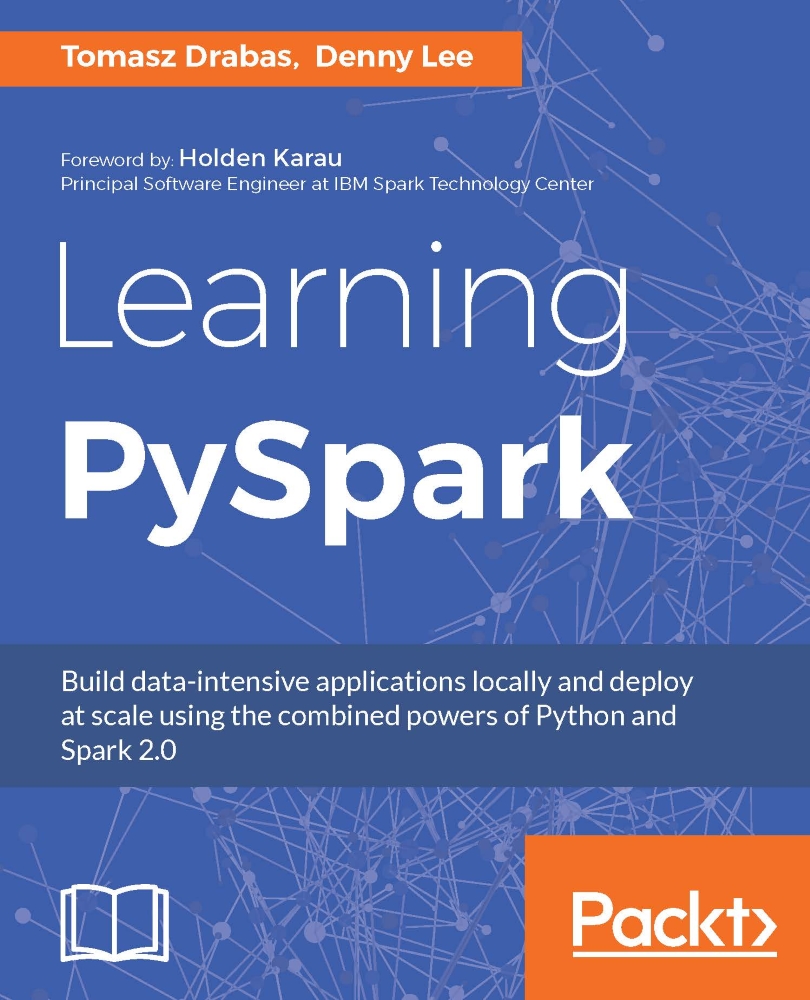

Most ebook files are in PDF format, so you can easily read them using various software such as Foxit Reader or directly on the Google Chrome browser.
Some ebook files are released by publishers in other formats such as .awz, .mobi, .epub, .fb2, etc. You may need to install specific software to read these formats on mobile/PC, such as Calibre.
Please read the tutorial at this link: https://ebookbell.com/faq
We offer FREE conversion to the popular formats you request; however, this may take some time. Therefore, right after payment, please email us, and we will try to provide the service as quickly as possible.
For some exceptional file formats or broken links (if any), please refrain from opening any disputes. Instead, email us first, and we will try to assist within a maximum of 6 hours.
EbookBell Team

4.3
58 reviewsBuild data-intensive applications locally and deploy at scale using the
combined powers of Python and Spark 2.0 About This Book - Learn why and how
you can efficiently use Python to process data and build machine learning
models in Apache Spark 2.0 - Develop and deploy efficient, scalable real-time
Spark solutions - Take your understanding of using Spark with Python to the
next level with this jump start guide Who This Book Is For If you are a Python
developer who wants to learn about the Apache Spark 2.0 ecosystem, this book
is for you. A firm understanding of Python is expected to get the best out of
the book. Familiarity with Spark would be useful, but is not mandatory. What
You Will Learn - Learn about Apache Spark and the Spark 2.0 architecture -
Build and interact with Spark DataFrames using Spark SQL - Learn how to solve
graph and deep learning problems using GraphFrames and TensorFrames
respectively - Read, transform, and understand data and use it to train
machine learning models - Build machine learning models with MLlib and ML -
Learn how to submit your applications programmatically using spark-submit -
Deploy locally built applications to a cluster In Detail Apache Spark is an
open source framework for efficient cluster computing with a strong interface
for data parallelism and fault tolerance. This book will show you how to
leverage the power of Python and put it to use in the Spark ecosystem. You
will start by getting a firm understanding of the Spark 2.0 architecture and
how to set up a Python environment for Spark. You will get familiar with the
modules available in PySpark. You will learn how to abstract data with RDDs
and DataFrames and understand the streaming capabilities of PySpark. Also, you
will get a thorough overview of machine learning capabilities of PySpark using
ML and MLlib, graph processing using GraphFrames, and polyglot persistence
using Blaze. Finally, you will learn how to deploy your applications to the
cloud using the spark-submit command. By the end of this book, you will have
established a firm understanding of the Spark Python API and how it can be
used to build data-intensive applications. Style and approach This book takes
a very comprehensive, step-by-step approach so you understand how the Spark
ecosystem can be used with Python to develop efficient, scalable solutions.
Every chapter is standalone and written in a very easy-to-understand manner,
with a focus on both the hows and the whys of each concept.